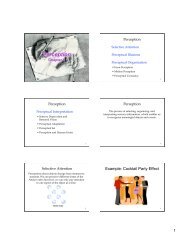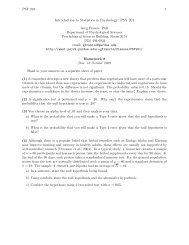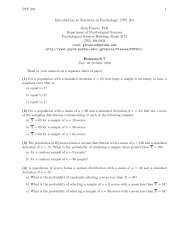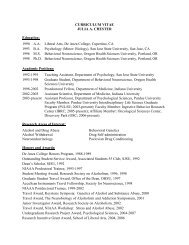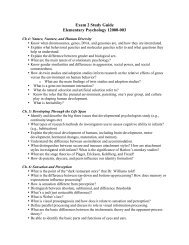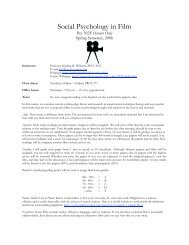Sensation & Perception
Sensation & Perception
Sensation & Perception
Create successful ePaper yourself
Turn your PDF publications into a flip-book with our unique Google optimized e-Paper software.
PAIN<br />
Biopsychosocial Influences<br />
Pain Control<br />
Pain can be controlled by a number of therapies<br />
including, drugs, surgery, acupuncture, exercise,<br />
hypnosis, and even thought distraction.<br />
Pain<br />
Pain tells the body that something has gone wrong.<br />
Usually pain results from damage to the skin and other<br />
tissues. A rare disease exists in which the afflicted person<br />
feels no pain. (CIPA: Congenital Insensitivity to Pain)<br />
91 Ashley Blocker (right) feels neither pain<br />
nor extreme hot or cold.<br />
92<br />
93<br />
95<br />
Todd Richards and Aric Vills, U.W.<br />
©Hunter Hoffman, www.vrpain.com<br />
Gate-Control Theory<br />
Melzak and Wall (1965, 1983) proposed that our spinal<br />
cord contains neurological “gates” that either block pain<br />
or allow it to be sensed.<br />
Body Position and Movement<br />
The sense of our body parts’ position and movement is<br />
called kinesthesis. The vestibular sense monitors the<br />
head (and body’s) position.<br />
Whirling Dervishes Wire Walk<br />
http://www.heyokamagazine.com<br />
AP Photo/ Stephen Morton<br />
Gary Comer/ PhototakeUSA.com<br />
Bob Daemmrich/ The Image Works<br />
94<br />
96<br />
16


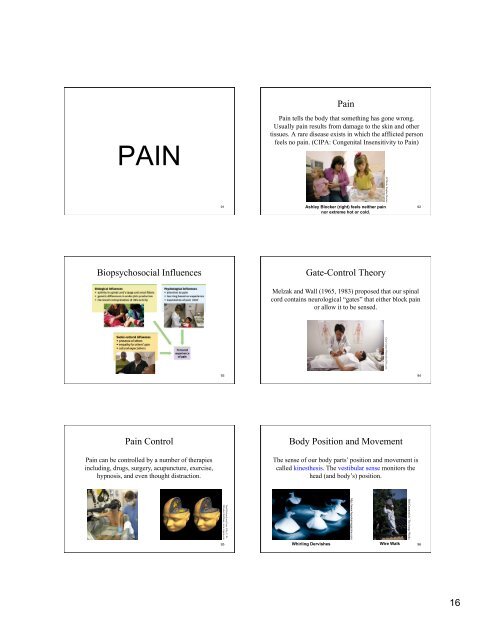
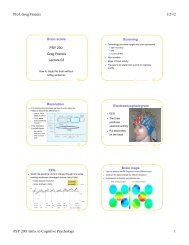

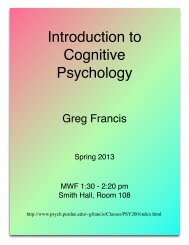
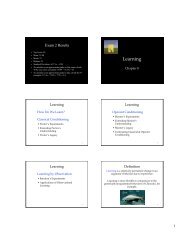
![Exam 4 Study Guide[1]](https://img.yumpu.com/45196739/1/190x245/exam-4-study-guide1.jpg?quality=85)
